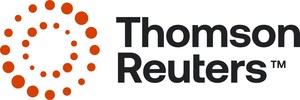Thomson Reuters Paper Charts Course to Eliminating $3.6 Trillion in Healthcare Waste in a Decade
ANN ARBOR, Mich., June 14 /PRNewswire/ -- The U.S. healthcare industry can eliminate $3.6 trillion in healthcare waste over the next 10 years by addressing a series of operational inefficiencies, according to a white paper published today by Thomson Reuters.
The report analyzes the country's leading public and private sector efforts to reduce waste in the healthcare system and identifies five proven strategies that have been deployed in the real world to cut costs and improve patient care.
"Last year, we published a report concluding that the U.S. healthcare system wastes $700 billion a year," said Bob Kelley, vice president for healthcare analytics at Thomson Reuters and co-author of the paper released today. "This new report describes a possible path for significantly reducing that waste."
By systematically incorporating these best practices into the organizational structure of the healthcare industry, the new paper says, it's possible to cut waste 5 percent per year. Over 10 years, that would add up to $3.6 trillion and keep total healthcare expenditures at their current rate of about 17 percent of the nation's gross domestic product (GDP). Among the strategies outlined in the paper are the following:
- Engage Consumers: By engaging the public in discussions with their caregivers regarding the value and risk of specific treatment options, it is possible to dramatically reduce money spent for unnecessary treatments.
- Coordinate Care: Healthcare providers lacking access to patients' medical records leads to the duplication of tests and inappropriate treatments that are estimated to cost up to $50 billion annually. Simple incentives have made a significant difference in the implementation of electronic records in several healthcare systems.
- Manage Disease and Maintain Wellness: This strategy ensures that patients are actively engaged, along with their clinicians, in managing their own health through attention to personal behavior, disease prevention, early detection and appropriate care for chronic diseases.
- Design for Patient Safety and Quality: Preventable medical errors account for $50 billion to $100 billion in annual healthcare spending. By implementing a simple checklist approach based on evidence-based best practices, several healthcare systems have improved patient outcomes and reduced costs.
- Reduce Opportunities for Fraud: In 2007, when the U.S. spent roughly $2.3 trillion on healthcare, fraud was estimated to account for as much as 5 to 10 percent of healthcare spending, according to a report published by the George Washington University School of Public Health and Health Services. Computerized systems that track data anomalies to identify fraud and breaches in payment integrity have been proven to stem these costs in several state Medicaid programs.
"We started with a premise that RAND Health researchers put forth in a recent article in the New England Journal of Medicine — it is reasonable to set a goal of constraining healthcare spending to its current share of the GDP," said Ray Fabius, M.D., chief medical officer at Thomson Reuters and co-author of the white paper. "Then we investigated initiatives that have successfully reduced healthcare costs without sacrificing quality — real-world examples of what's possible — and in some cases estimated the savings if they were widely replicated.
"The result, detailed in this paper, is one path for reaching this goal over the next decade."
The study can be downloaded at www.factsforhealthcare.com. (A simple registration is required.)
Thomson Reuters
Thomson Reuters is the world's leading source of intelligent information for businesses and professionals. We combine industry expertise with innovative technology to deliver critical information to leading decision makers in the financial, legal, tax and accounting, healthcare and science and media markets, powered by the world's most trusted news organization. With headquarters in New York and major operations in London and Eagan, Minnesota, Thomson Reuters employs 55,000 people and operates in over 100 countries. For more information, go to www.thomsonreuters.com.
SOURCE Thomson Reuters
WANT YOUR COMPANY'S NEWS FEATURED ON PRNEWSWIRE.COM?
Newsrooms &
Influencers
Digital Media
Outlets
Journalists
Opted In





Share this article